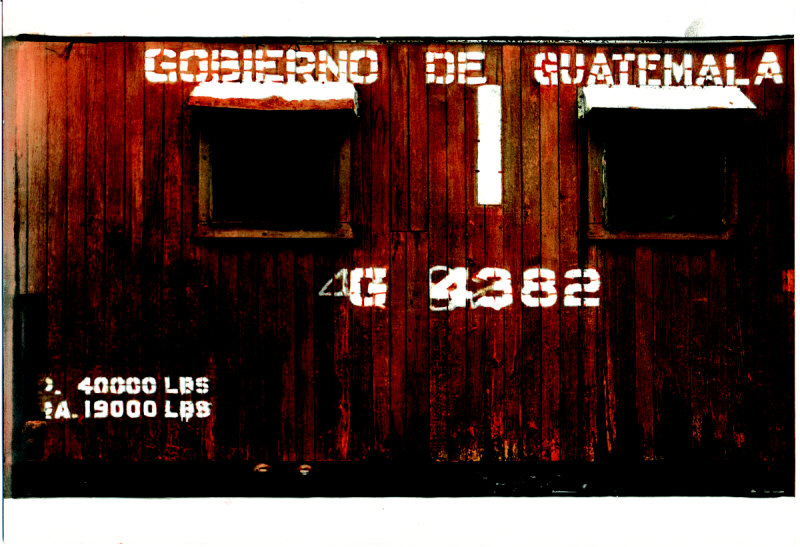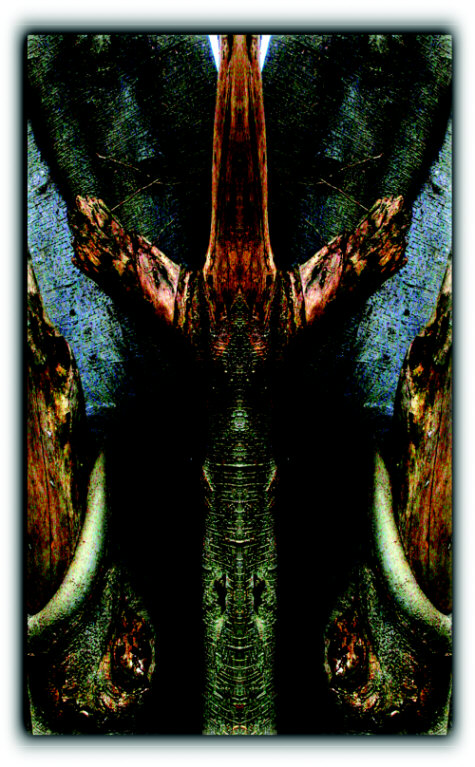 Bara Sapir
Bara SapirI knew Guatemala endured a turbulent history, with dictators and socialists vying for control of the government. A hundred years of violent protest and repression culminated in the bloody civil war of the late twentieth century, which drove waves of refugees from the country. Were the photographs a reduction and encasement of this experience? Was Igal, the Jewish artist, referring back to his European migration or was this a portrait of his newly inherited culture. Were they both simultaneously? Was there a fate shared here with these people that I didn't know about? It's so easy and dangerous to see ones own ancestral tragedy as disconnected from our universal family history.
Similarly powerful, are Jaime's mysterious black and white photographs paired with his pointed quips (see illustration). In the exhibit introduction, he claims that these examine homeland as a determining influence on individuality and family relations. He charts the bleak internal landscape of a dissident, and his works express the alienation that can force an individual into exile. Costumbre, for example, shows a lone man, caught in a Fred Astaire dance step, in stark contrast against a non-descript wall behind him. A sole migrant, perhaps, with the caption, "...allĖ donde se tiene por costumbre de ponerle apodo a todo el mundo y a espiar por las rendijas de las ventanas." (Translation: ...there, where it is customary to have a nickname for every person and to spy through the slits of windows.).
 In contrast, Igal and Jaime's father, Mario, creates large psychedelic digital photographs. They depict an earthy-agenda through architecture and manipulations of nature revealing hidden life and form. Ironically, in striving to represent hidden structures, Mario utilizes far more technologically advanced techniques than either of his sons. Through Mario's generous repetition and adulteration of form and color, his forms become supernatural - - burlesque and carnivalesque. They hearken to an urban primitive where the interconnectedness of life merging with space- time. His images tweak normal vision to create a playground for the sensual palette.
In contrast, Igal and Jaime's father, Mario, creates large psychedelic digital photographs. They depict an earthy-agenda through architecture and manipulations of nature revealing hidden life and form. Ironically, in striving to represent hidden structures, Mario utilizes far more technologically advanced techniques than either of his sons. Through Mario's generous repetition and adulteration of form and color, his forms become supernatural - - burlesque and carnivalesque. They hearken to an urban primitive where the interconnectedness of life merging with space- time. His images tweak normal vision to create a playground for the sensual palette.
It seems that Mario may have been influenced by some of Igal's earlier works (not depicted in the exhibit). Otherwise what the three younger artists share is the image of closed windows. The two sons represent these as a black abyss--rather than shut out, they flatten and taunt: enter here only never to emerge. Mario covers his closed windows with a moth-like pattern, like wallpaper. The form of the windows becomes eyes of a skull-shaped facade within the larger architectural form. We confront the building and blissfully eye its surface intricacies, but what lies within remains hidden.



Singing God's Praises:
Psalms and Authenticity
Josh Feigelson
Two Prayers for the Days of Awe
Rabbi Zalman Schachter-Shalomi
How can you be gay and Jewish?
Jay Michaelson
Hiding your Sins
Hal Sirowitz
Retrato de Familia
Bara Sapir
Jews and Bush
An Online Resource Guide
Archive
Our 550 Back Pages
Saddies
David Stromberg
Zeek in Print
Spring/Summer 2004 issue now on sale!
About Zeek
Mailing List
Contact Us
Subscribe
Tech Support
Links
From previous issues:
French Antisemitism
Michael Shurkin
The Stable
Ira Stone